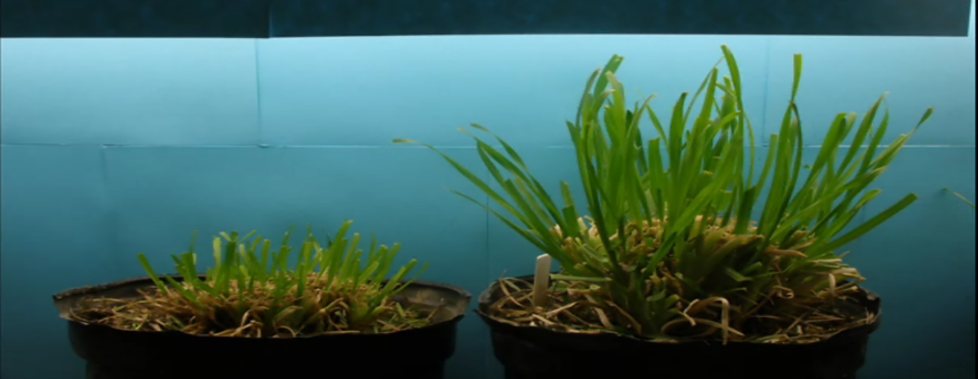Rotational Grazing on Horse Farms

For decades, rotational grazing was a term you heard on cattle farms, not horse farms. But this is changing, and for good reason. By grazing pastures in rotation, we are able to maintain better pastures and utilize them more efficiently. Many horse owners who have implemented rotational grazing have found it has greatly benefited their operations, but it can feel tough to get started. Thankfully, it doesn’t have to be! This is a short guide to help horse owners and farm managers kick-start a rotational grazing program on their horse farm.
Components of Rotational Grazing
There are two key components to rotational grazing that benefit a pasture: grazing and rest. Successful grazing simply means that the majority of the growth above about 3 inches has been removed. Horses are not great at this because they are spot grazers, but mowing is an easy way to compensate. When rotationally grazing pastures, mow the pasture around 3-4 inches to even out the growth after horses are removed.
Rest is the other half of the equation and the part we often shortcut. The rest period between grazings allows plants to regrow, building new leaves and replenishing their root reserves. Repeatedly shortening or skipping this period all together (continuous grazing) will deplete plants of root reserves, slow the growth of new leaves and eventually thin the pasture and invite weeds. The amount of rest needed varies by many factors, including time of year, grass species and previous grazing pressure, but two weeks is a good starting point.
That’s it. No complicated formulas or daily schedules. Starting with two weeks on, two weeks off will start to benefit the pasture by prolonging stand life and reducing the encroachment of weeds.
Implementation
For horse farms, our research has found two different practices that tend to work well, and can be used independently or together.
The first is what is called “paired pastures” and simply means pairing two existing pastures and rotating between them. Ideally, these would be of similar size and location, making the switch every two weeks simple and straightforward. Instead of turning out one horse in each of the two paddocks every day, turn both horses out in one paddock for two weeks, then rotate to the other. This will increase the grazing pressure (stocking density) on the pasture being grazed but will allow a crucial rest period for the second pasture. The stocking rate is the same as when one horse was in each pasture, but the rest and rotation will be better for maintaining a vigorous grass stand.

The second method is simply dividing a pasture in half and rotating between the two sides. This can easily be accomplished by using temporary electric fence, or even more permanent fencing. It may also be possible to put a water source in the fence line separating the two sides, so that one water facility feeds both sides and reduces the labor needed to make the switch. If using temporary fencing, this method allows you to test out where and how you divide and appreciate the benefits before committing to the expense of permanent fencing.

Next Steps
Rotational grazing plans are what you make of them. They can be quite simple, as outlined above, or as complex as moving animals twice a day, common in grazing dairies. Simply put, as the number of paddocks increases, so does the percent utilization because there is less waste. Increasing paddock number while keeping the number of horses the same means that stock is concentrated on small areas and horses don’t have as much chance to be selective.
After starting with two paddocks for two weeks, you may find certain times of year that a slower rotation, say three or four weeks, is more beneficial. You may find having several paddocks and doing one week on and three to four weeks off works better for you. Expert level grazers will move based on amount of forage available in the current and the next paddock. Regardless of whether this is your first attempt at rotations, or you are an expert, keep these simple concepts in mind:
- The rest periods are crucial; be sure to give each paddock at least two weeks off between grazing.
- Don’t graze pastures below about 3 inches.
- Mow paddocks when horses are removed to even out growth or to remove weeds and seedheads; otherwise, let it grow.
- Simple is great to start, but adding paddocks gives you greater control and will likely increase benefits.
- Safe electric fences are pulled tight, highly visible and highly charged for more bite. Also be sure to have a permanent fence perimeter.
- Be willing to try new things, and experiment with new ways of doing the same things.
Resources for Rotational Grazing
The University of Kentucky Forage Extension website has several great publications including Rotational Grazing and Temporary Fences for Horses. Keep in mind that while cattle and horses are different and must be managed as such, many of the same concepts in cattle grazing can apply to horses as well. Many horse farm owners have found great benefit in attending primarily cattle educational seminars such as the Kentucky Grazing School. Additionally, many Cooperative Extension Agents and Natural Resource Conservationists have experience in setting up rotational grazing systems. Regardless of how you set it up, any level of rotation will be an improvement over continuous grazing and will benefit you, your pastures and your horses.
Krista Lea, MS, coordinator of the University of Kentucky’s Horse Pasture Evaluation Program, provided this information.
